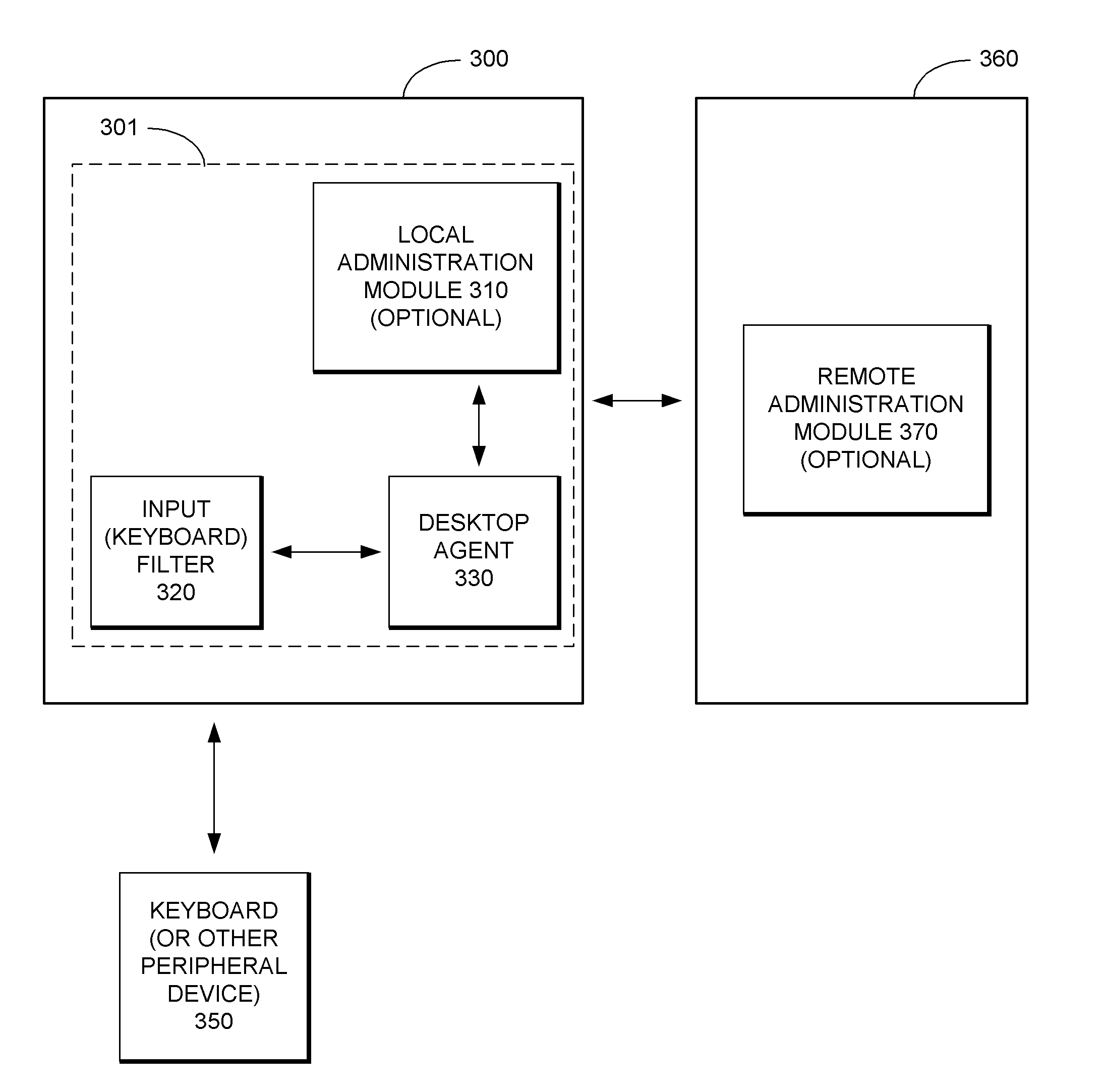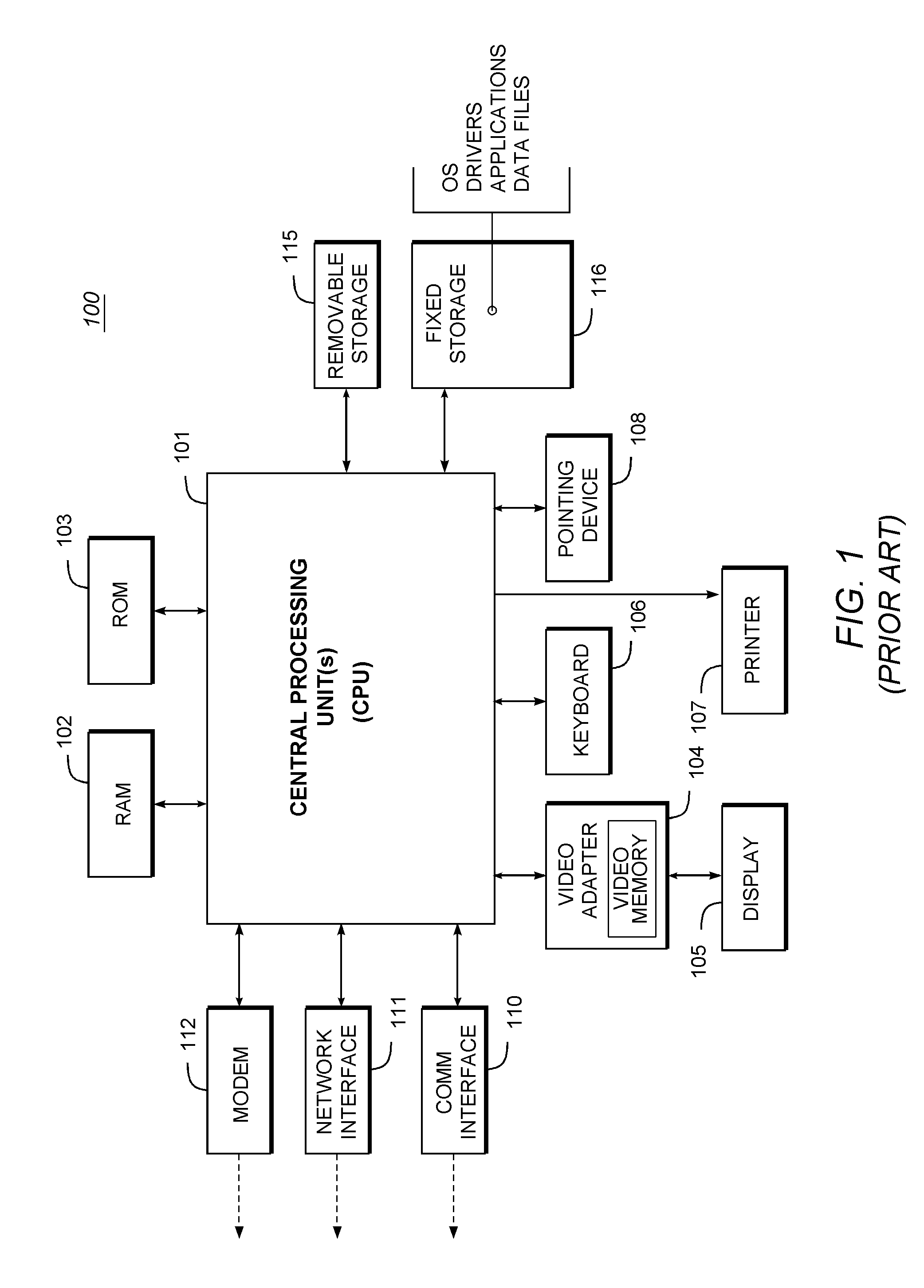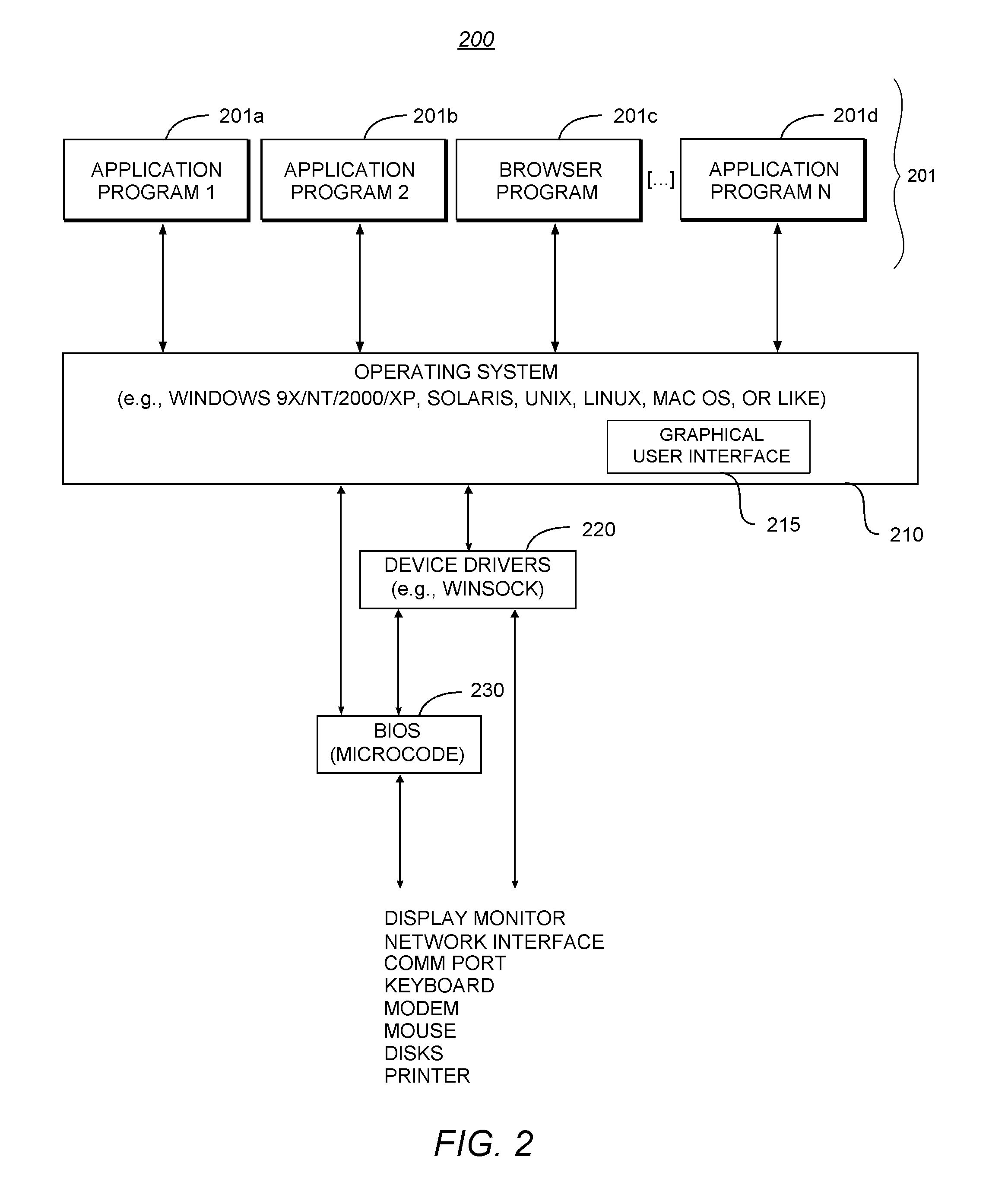Security System with Methodology for Defending Against Security Breaches of Peripheral Devices
a peripheral device and security system technology, applied in the field of defending computer systems against security breaches, can solve the problems of stealing proprietary data and programs, affecting the security of computers with detachable peripheral devices, and perpetrators (hackers) capable of damaging local computer systems, etc., to prevent a security breach involving the device
- Summary
- Abstract
- Description
- Claims
- Application Information
AI Technical Summary
Problems solved by technology
Method used
Image
Examples
Embodiment Construction
Glossary
[0025] The following definitions are offered for purposes of illustration, not limitation, in order to assist with understanding the discussion that follows.
[0026] FireWire (IEEE 1394): This is a very fast external bus standard that supports data transfer rates of up to 400 Mbps (in 1394a) and 800 Mbps (in 1394b).
[0027] IDE: Abbreviation for Integrated Drive Electronics. An IDE interface is an interface for mass storage devices, in which the controller is integrated into the disk or CD-ROM drive. IDE is increasingly becoming subsumed by ATA, “Advanced Technology Attachment,” a disk drive implementation that integrates the controller on the disk drive itself.
[0028] Parallel port: A parallel port is an interface for connecting an external device such as a printer. On PCs, the parallel port uses a 25-pin connector (type DB-25) and is used to connect printers, computers, and other devices that need relatively high bandwidth. Newer types of parallel port include the EPP (Enh...
PUM
 Login to View More
Login to View More Abstract
Description
Claims
Application Information
 Login to View More
Login to View More - R&D
- Intellectual Property
- Life Sciences
- Materials
- Tech Scout
- Unparalleled Data Quality
- Higher Quality Content
- 60% Fewer Hallucinations
Browse by: Latest US Patents, China's latest patents, Technical Efficacy Thesaurus, Application Domain, Technology Topic, Popular Technical Reports.
© 2025 PatSnap. All rights reserved.Legal|Privacy policy|Modern Slavery Act Transparency Statement|Sitemap|About US| Contact US: help@patsnap.com



